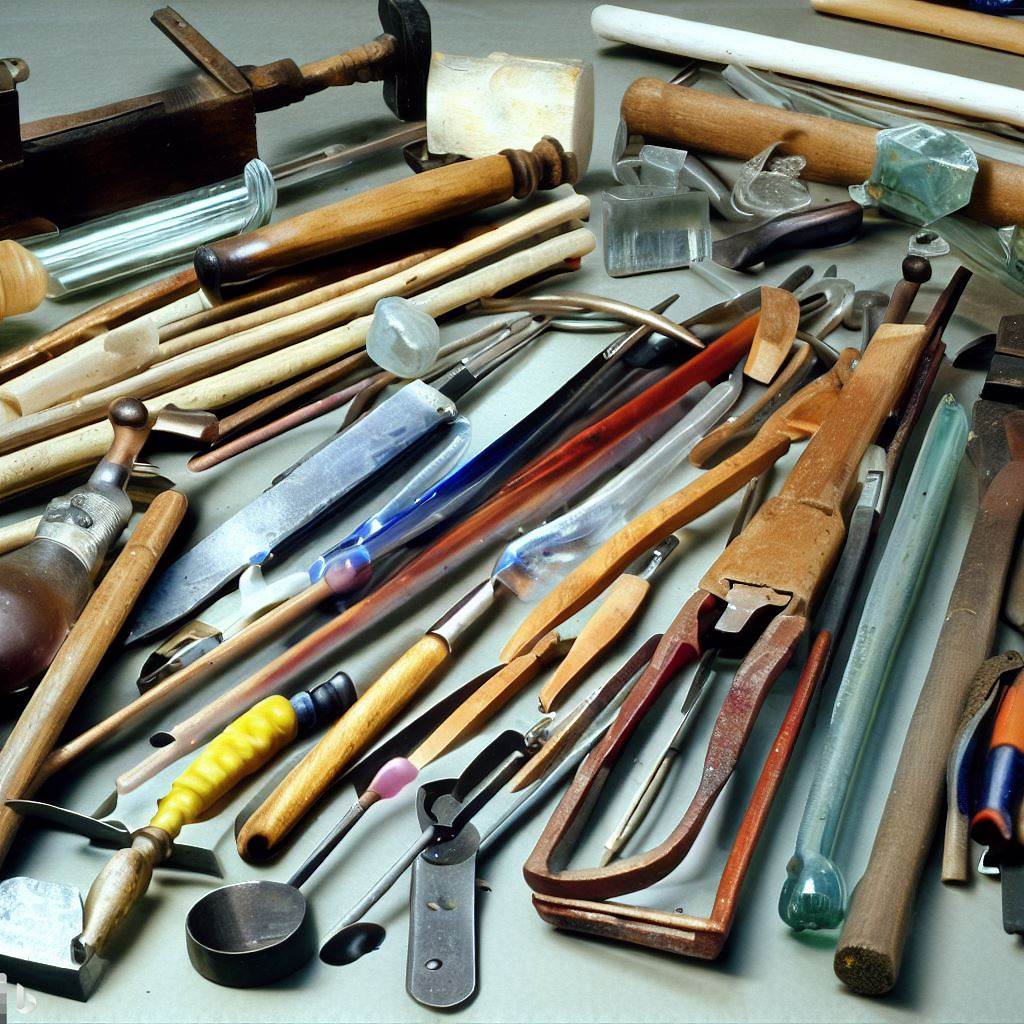Equipping Your Glassblowing Studio: Key Tools and Machinery
Glassblowing is a fascinating art form that involves shaping molten glass into beautiful and functional objects. It is a challenging craft that requires specialized equipment and safety gear.
Protective Gear: Safety First
When working with molten glass, it is important to wear protective gear to prevent burns and eye injuries. This includes leather gloves, didymium safety glasses, an apron or jacket, and fireproof shoes.
Essential Tools: DIY vs Professional Grade
A few basic hand tools are essential for glassblowing. These include jacks, punty rods, a bench knife, and newspaper pads.
Beginners can make some of these tools themselves to save money. For example, copper tubes can be used to make inexpensive blowpipes. However, it is important to invest in high-quality stainless steel and graphite tools if you plan on doing a lot of glassblowing.
The Essential Furnace
The furnace is the heart of any glassblowing studio. It is used to melt the glass and keep it at a molten state. Small electric furnaces designed for glassblowing start around $600 and reach over $2,000 for more advanced models.
When choosing a furnace, it is important to consider the size of the furnace, the temperature range, and the insulation. It is also important to make sure that the furnace is compatible with the type of glass you will be working with.
Marvering and Mold Shaping
Two work surfaces are essential for glassblowing: a marver table and a molding table. The marver table is used to cool and shape the glass. The molding table is used to create specific shapes in the glass.
Annealing: Controlled Cooling
After the glass is blown, it is important to cool it down slowly. This is done in an annealing oven, also known as a lehr or tempering oven. The annealing oven cools the glass gradually over 10-20 hours, which helps to prevent the glass from cracking.
Protecting Lungs from Glass Dust
When grinding, polishing, or coldworking glass, it is important to protect your lungs from the fine silica dust that is produced. This can be done by using a water swivel on glass lathes or by wearing a NIOSH-rated respirator.
Tools for Glass Coloring and Decoration
To create colorful and patterned glass, you will need a variety of tools and materials. These include glass color rods, frit (ground glass), murrine patterns, and a small second furnace.
Investing in Your Glassblowing Passion
Equipping a personal glass studio requires significant investment. However, even with minimal tools, you can still create beautiful and functional pieces of glass. As your skills progress, you can upgrade your equipment and start working on more ambitious projects.
Setting Up Your Studio Space
In addition to the essential tools, there are a few environmental considerations that you will need to take into account when setting up your glassblowing studio. These include:
- Space: You will need enough space for the furnace, the marver table, the molding table, and any other equipment that you plan on using.
- Ventilation: The furnace will produce a lot of heat and fumes, so you will need to make sure that your studio is well-ventilated.
- Lighting: You will need good lighting in your studio so that you can see what you are doing.
Conclusion
Glassblowing is a challenging and rewarding art form. With the right equipment and safety gear, you can create beautiful and functional pieces of glass.
